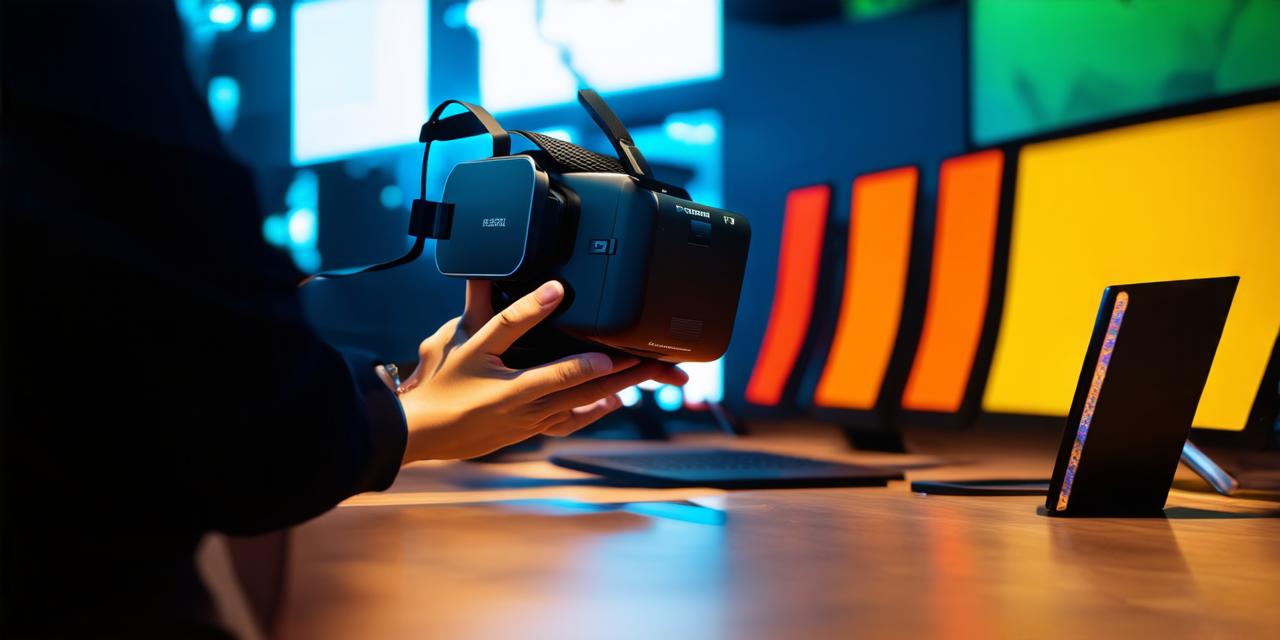The Rise of Virtual Reality Technology
Virtual reality technology has been around for decades, but it’s only in the last few years that it has become more accessible and affordable. This is due to advancements in hardware, software, and wireless technology. Today, VR headsets are becoming smaller, lighter, and more affordable. This has led to a surge in demand for VR applications across various industries.
The Role of a VR Developer
As a VR developer, your role is to create immersive experiences that transport users into virtual worlds. This involves designing, developing, and testing VR applications that are engaging, interactive, and intuitive. You will work with a team of designers, programmers, artists, and other professionals to bring your vision to life.
A Typical Day in the Life of a VR Developer
A typical day in the life of a VR developer can vary depending on the size of the company and the project you’re working on. However, there are some common tasks that many VR developers perform every day.
-
1. Brainstorming and Conceptualizing
-
2. Designing and Prototyping
-
3. Writing Code and Debugging
-
4. Testing and Iteration
-
5. Collaborating with Teams
The first part of your day might involve brainstorming ideas for new projects or features to add to existing applications. This involves discussing the project goals with stakeholders, conducting market research, and analyzing user feedback to identify areas for improvement.
Once you have a clear idea of what you want to achieve, you’ll start designing and prototyping your application. You might use 3D modeling software to create virtual environments or characters, or you might use game engines like Unity or Unreal Engine to build interactive experiences. At this stage, you’ll also work with artists and designers to create assets that will bring your vision to life.
As a VR developer, you’ll need to be proficient in programming languages like C++, Java, or Python. You’ll write code to implement features, fix bugs, and optimize performance. You’ll also work with other developers to ensure that your code integrates seamlessly with the rest of the application.
Once you have a working prototype, you’ll start testing it extensively to identify any issues or areas for improvement. This might involve running usability tests with users, analyzing performance metrics, and fixing bugs. You’ll also iterate on your design and code to make improvements based on user feedback.
As a VR developer, you’ll work closely with other professionals like designers, programmers, artists, and project managers. You’ll need to communicate effectively to ensure that everyone is on the same page and working towards the same goals.
Case Studies of Successful VR Developers
To get a better understanding of what it’s like to be a VR developer, let’s take a look at some case studies of successful developers in the industry.
1. John Carmack
John Carmack is a legendary video game developer who co-founded id Software, the company behind the popular Doom and Quake series. In 2017, he created a VR headset called the Oculus Go, which was designed to be affordable and accessible. The Oculus Go has been a huge success and has helped to bring VR technology to a wider audience.
2. Tim Sweeney
Tim Sweeney is the founder of Epic Games, the company behind Unreal Engine. Unreal Engine is one of the most popular game engines in the world, and it’s used by many VR developers to create immersive experiences. Sweeney has been a vocal advocate for VR technology, and he believes that it has the potential to transform the way we work and play.
3. Markus Persson
Markus Persson is a Swedish video game developer who created the popular Minecraft game. In 2017, he launched a new VR game called “Gun Mettle” that was designed specifically for virtual reality. The game has been well-received by critics and players alike, and it’s a great example of how VR technology can be used to create innovative and engaging experiences.
The Future of Virtual Reality Technology
Virtual reality technology is still in its early stages, but it’s already making a significant impact on many industries. As a VR developer, you have the opportunity to work on some of the most exciting projects of the future. Whether you’re interested in gaming, education, healthcare, or any other industry, there are plenty of opportunities to create immersive experiences that will change the way we interact with technology.
FAQs
1. What skills do I need to become a VR developer?
To become a VR developer, you’ll need to have strong programming skills, as well as knowledge of 3D modeling and game engines like Unity or Unreal Engine. You’ll also need to be creative, detail-oriented, and able to work well in a team environment.
2. What is the job outlook for VR developers?
The job outlook for VR developers is very positive. As more companies invest in VR technology, there will be a growing demand for skilled developers. According to a report by Statista, the global virtual reality market size is expected to reach USD 140 billion by 2025.
3. What kind of projects do VR developers work on?
VR developers work on a wide range of projects, including games, simulations, training programs, and interactive experiences for marketing, education, and healthcare. The possibilities are endless, and there are always new opportunities to explore.
Summary
Becoming a VR developer is an exciting and challenging career path. You’ll have the opportunity to work on innovative projects that will shape the future of technology. Whether you’re interested in gaming, education, healthcare, or any other industry, there are plenty of opportunities to create immersive experiences that will change the way we interact with technology. With the right skills and a passion for innovation, you can achieve great success as a VR developer.
